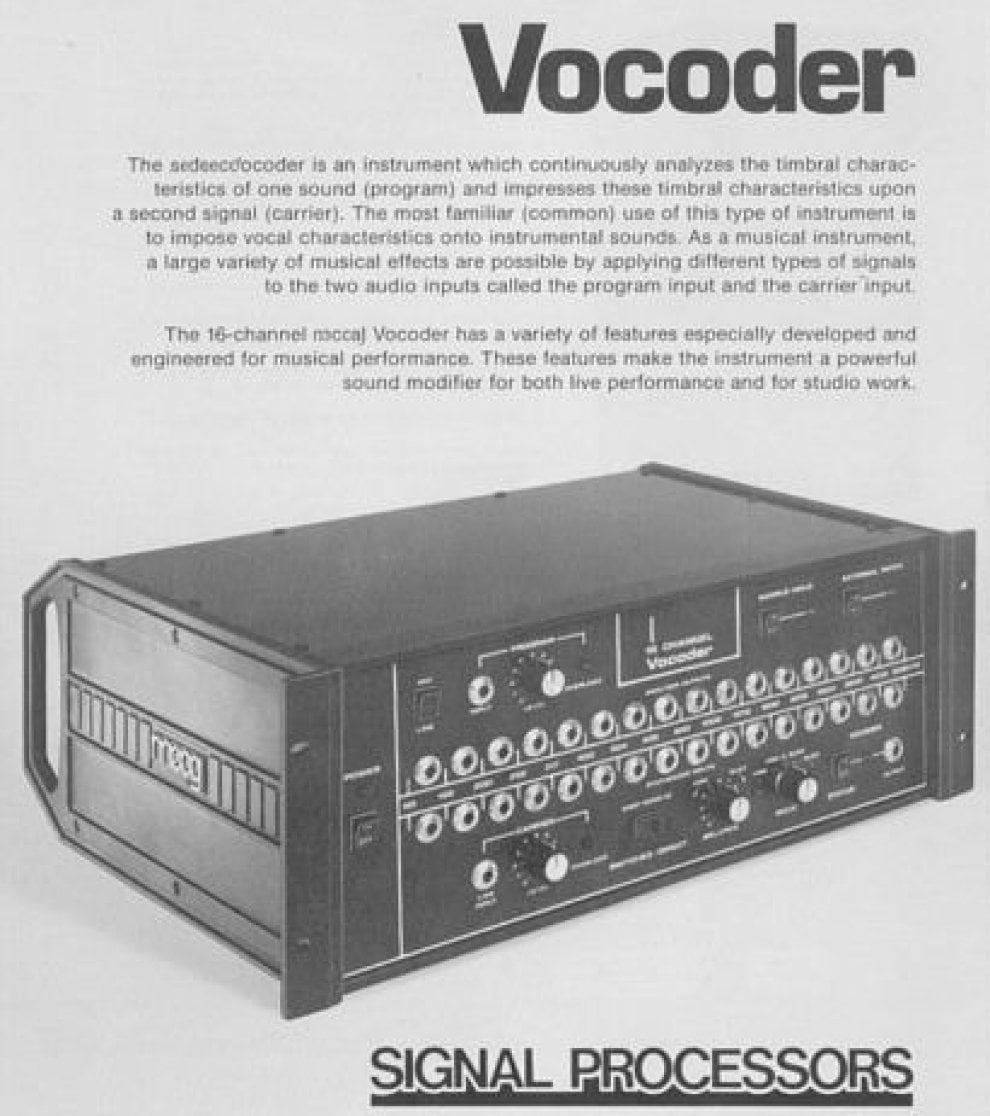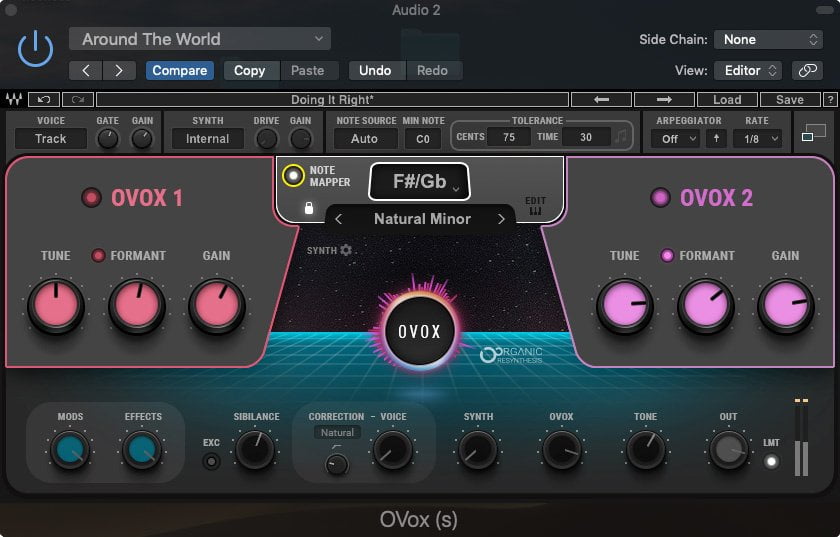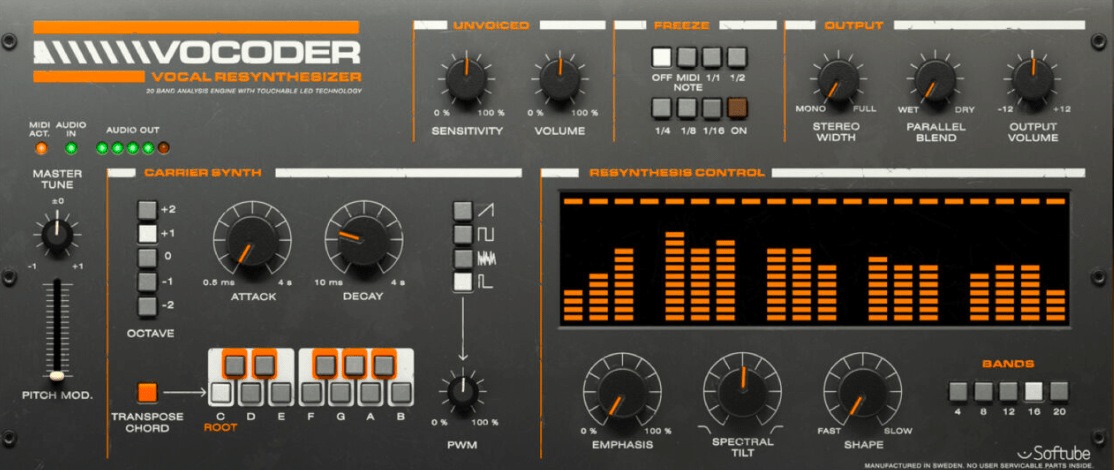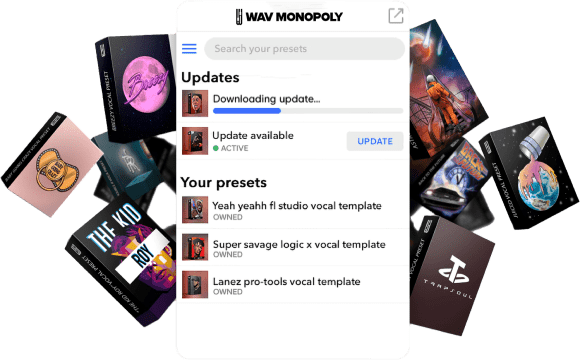LEARN MUSIC AND AUDIO PRODUCTION | Wavmonopoly TIPS AND TRICKS
What is a Vocoder? How To Use A Vocoder

wavmonopoly June 25, 2022

Have you ever listened to a song and think, “how did they make that sound?” Well, today we’re going to dive into one of the most mysterious music production techniques: the vocoder. We’ll go over what it is, how it works, and some common parameters. So if you’re curious about how your favorite songs are made, read on!
What exactly is a Vocoder?
A vocoder or voice encoder is a device that converts human speech into a digital signal that can be transmitted over long distances. It essentially allows people to communicate with each other using only their voices. The vocoder has been used in a variety of ways, including in telephone systems and radio broadcasting. More recently, vocoders have been used to create synthetic speech, as well as to create music.
Vocoders can be used to create a wide variety of sounds, including imitating the human voice, creating animal sounds, or creating robotic noises. By manipulating the different parts of the vocoder, different effects can be achieved. For example, by reducing the number of bits per second, a vocoder can make a person sound like they are speaking through a radio.
Vocoders are also commonly used in music production. By using a vocoder, artists like Daft Punk can create unique and interesting sounds that would not be possible with traditional instruments. For example, by running a vocals track through a vocoder, the producer can make the voice sound like a synthesizer. This can add a new dimension to the music and can make it sound more modern.
Overall, vocoders are a versatile tool that can be used in a variety of ways. They can be used to communicate over long distances, create synthetic speech, or produce unique sounds in music. By understanding how vocoder sound is generated, you can unlock a whole world of possibilities.
A brief history of Vocoders

Vocoders are devices that allow for the transmission of voice signals using a limited number of frequencies. The first vocoder was developed in the early 1930s by Bell Labs as a way to compress and transmit speech signals over long-distance telephone lines.
The technology was later adapted for use in radio communications and, during World War II, in military applications. In the 1950s and 1960s, classic vocoder became widely used in commercial and consumer products, such as portable radios and children’s toys. Today, vocoders are found in a variety of applications, including cell phones, computer-mediated communication, speech synthesis, and music production.
How does a Vocoder work?
A vocoder is an electronic device that is used to synthesize and analyze the human voice. It takes the input of an acoustic signal, such as speech, and converts it into a digital signal. The vocoder then analyzes the digital signal and produces a synthetic version of the original signal.
The vocoder has two main parts: the encoder and the decoder. The encoder converts the input signal into a digital signal. The decoder then synthesizes the digital signal and produces a synthetic version of the original signal.
The vocoder is used in many different applications, such as voice communication, speech synthesis, and music synthesis. It can also be used to create special effects, such as the “robot voice” often heard in movies and television.
Sounds produced with Vocoder
The vocoder is an audio processor that can create a wide range of sounds. By modulating the output of one sound source with another, it can create everything from robotic effects to natural-sounding vowel sounds. The most common use for musical usage vocoders is to create a talking synth or robot voice.
One of the unique things about vocoder is that it can take any input signal and use it to modulate the output. This means that you can use anything from a human voice to an instrument as the input signal. The output will then be filtered and shaped by the vocoder to create unique sounds.
Robot Voices
One of the most popular ways to use a vocoder is to create a talking synth or robot voice. This is done by using a human voice as the input signal and then shaping the output to sound like speech. This can be used to create everything from simple robot voices to more complex ones that sound almost natural.
Vowel Sounds
Another popular use for vocoders is to create vowel sounds. By using a vocoder with a synth or sampler, it’s possible to create sounds that mimic the human voice. This can be used to create realistic vocal effects or to create more unique and otherworldly sounds.
Processing Audio Signals
Vocoders can also be used to process other audio signals. By modulating the output of an instrument with another sound source, it’s possible to create new and interesting sounds. This can be used to create everything from new and unusual effects for guitars to creating strange and otherworldly sounds for synthesizers.
Vocoders are a versatile tool that can be used to create a wide range of sounds. By modulating the output of one sound source with another, they can create everything from robotic effects to natural-sounding vowel sounds. By using a vocoder with a synth or sampler, it’s possible to create sounds that mimic the human voice.
And by processing other audio signals, it’s possible to create new and interesting sounds. Whether you’re looking to generate a classic sound, create a talking synth or robot voice, create vowel sounds, or process other audio signals, a vocoder is a versatile tool that can help you create the sounds you’re looking for.
Important Parameters of Vocoder
The most important parameters of vocoder plugins are the following:

Bands
Bands are the basic elements of a vocoder. They are used to create different sounds by manipulating the corresponding frequency range of the modulator signal. By changing the number and width of the many frequency bands, you can create different effects on the sound.

For example, you can make the sound brighter or darker, or you can make it more or less abrasive. By changing the order of the same frequency bands, you can also create different timbres. For example, you can make the sound more or less like a human voice, or you can make it more like an animal noise. There are many possibilities for creating new and interesting sounds with a vocoder, and the number and width of the frequency bands are one of the most important factors in determining the character of the sound.
Formant
Formant is the reason why vocoders sound the way they do. It’s what gives them that robotic quality. Formant is a measure of the resonance of a sound. The higher the formant, the more resonant the sound. In a vocoder, the formant is used to create a difference in the sounds produced by different instruments.
For example, if you have a piano sound with a low formant and a guitar sound with a high formant, the vocoder will make the piano sound like it has a higher formant. This can be used to create a difference in the sounds of different instruments or to make one instrument sound like another.
The formant can also be used to create a difference in the timbre of an instrument. For example, if you have a piano sound with a low formant and a guitar sound with a high formant, the vocoder will make the piano sound brighter and the guitar sound darker.
You can use the formant to create all sorts of different sounds, from simple differences in timbre to completely new and unique sounds. Experiment with different formants to find the sound that you’re looking for.
Unvoiced
Some vocoders have an unvoiced setting, which can be used to encode speech sounds that don’t involve the vocal cords vibrating. These sounds include consonants like /p/ and /k/, as well as pauses between words.
To use the unvoiced setting on a vocoder, you’ll need to adjust the parameters so that the encoder is only processing the frequencies that are present in unvoiced sounds. These frequencies are typically lower than those used for voiced sounds.
Once you’ve adjusted the vocoder’s settings, you can start encoding unvoiced speech sounds. The quality of the encoded sound will depend on how well you’ve tuned the vocoder. With some practice, you should be able to produce clear and natural-sounding unvoiced speech.
Filters
Filters are one of the key components in a vocoder. By definition, a filter is an electronic device or circuit that removes certain frequencies from a carrier signal, allowing others to pass through. In a vocoder, filters are used to create a difference in the timbre of the sound being produced.
In music production, filters can be used to create a variety of different effects. For example, a low-pass filter can be used to create a “muffled” sound, while a high-pass filter can be used to make a sound brighter. By adjusting the cutoff frequency and resonance of the corresponding bandpass filter, a producer can create a wide range of different sounds.
Filters are an essential part of the vocoder, and by understanding how they work, you can create a wide range of different sounds. By experimenting with different cutoff frequencies and resonances, you can create a variety of unique timbres that will add interest and depth to your music.
Oscillators
Oscillators are used in electronic music production to make a distinction. It is possible to produce a wide range of sounds by varying the frequencies. This can be done by varying the pitch, timbre, or amplitude of the oscillators. By doing so, it is possible to create a wide range of sounds.
For example, by changing the pitch of an oscillator, it is possible to create a higher or lower note. By changing the timbre, it is possible to create a different-sounding instrument. And by changing the amplitude, it is possible to make the sound louder or softer.
In addition to the three main parameters that can be changed with an oscillator (pitch, timbre, and amplitude), there are also a few other parameters that can be changed. These include the waveform, the duty cycle, the phase, and the detune.
By changing these parameters, it is possible to create even more sounds. For example, by changing the waveform, it is possible to create a square wave or a sawtooth wave. By changing the duty cycle, it is possible to create a pulse wave. And by changing the phase, it is possible to create a different sound.
Summing Up
The vocoder is an interesting tool that has many potential uses in music. By understanding the parameters of the vocoder, you can begin to create your own sounds with this unique effect. While it may take some experimentation to find the right sound for your project, the end result can be a truly original piece of music. And usually vocoder plugins come with presets to make finding the perfect sound easier, So why not give vocoder a try? It might just be the perfect way to add a new dimension to your music.
